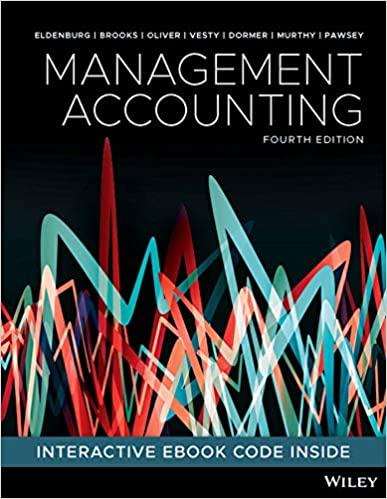Synergy Clothing (Synergy) began operations as a clothing manufacturer in the 1940s. It has grown from a
Question:
Synergy Clothing (Synergy) began operations as a clothing manufacturer in the 1940s. It has grown from a small firm into a multi-divisional diversified clothing company with three key divisions:
Fashion, which focuses on shirts and jeans; Uniforms which focuses on corporate and uniform wear; and Sportswear, which focuses on sports clothing with a specialty in custom sports uniforms. Until recently, the company had been owned by the same family. The grandson of the founder, Tim Peseta, still occupies a senior management position, although significant changes have occurred since the company was listed on the stock exchange in 2003. Since becoming a public company, a number of key structural and control system changes have been made by the new management team led by CEO Noel Oliver.
One of the first actions Noel took was to bring in a consulting firm to make an assessment of the whole organisation with a particular emphasis on the Fashion division. Noel had concerns that there was significant waste in the Fashion division but he needed real evidence that this was the case.
The consultant’s report was comprehensive and addressed the issues of particular interest to Noel.
Provided below is an excerpt from the report that relates to some of the thoughts of the consultant relating to the fashion division (FD):
1. Customers and market
• The FD was trying to supply product to any customer (retail outlet), irrespective of size of order, with little consideration for the costs associated with doing so. The consultant described this as trying to ‘deliver a purple polka dot shirt on a Sunday afternoon’.
• The tendency for the FD to have a product for every part of the market without much regard for the innovative product technologies that had made the FD’s brand strong in the past.
• The focus on producing 50 ranges per season, much of which it would seem was made to stock, and remained as finished goods inventory awaiting an order.
2. Operations and staffing
• There appeared to be insufficient resources dedicated to the design activity with the entire activity staffed by the equivalent of two staff.
• Excessive inventory levels both in terms of raw materials (cloth, where purchasing seemed to occur in an unplanned way predominantly by Tim Peseta on annual international buying trips) and finished goods (shirts, estimated at 290 000 items).
• Production volumes were governed by an economic order quantity model, which appeared to contribute to the excessive inventory levels, while the production process utilised manual, semi automated and fully-automated procedures.
Notwithstanding Tim’s tight control over the FD’s operations, morale on the shop floor appeared high, with many long-term employees (one machinist having been with the firm for 42 years).
Required
(a) Identify which of the above issues raised by the consultant could be addressed using the principles of lean accounting.
(b) Using lean accounting principles, what solutions would you provide for the issues you have
identified in part (a)?
Step by Step Answer:

Management Accounting
ISBN: 9780730369387
4th Edition
Authors: Leslie G. Eldenburg, Albie Brooks, Judy Oliver, Gillian Vesty, Rodney Dormer, Vijaya Murthy, Nick Pawsey





